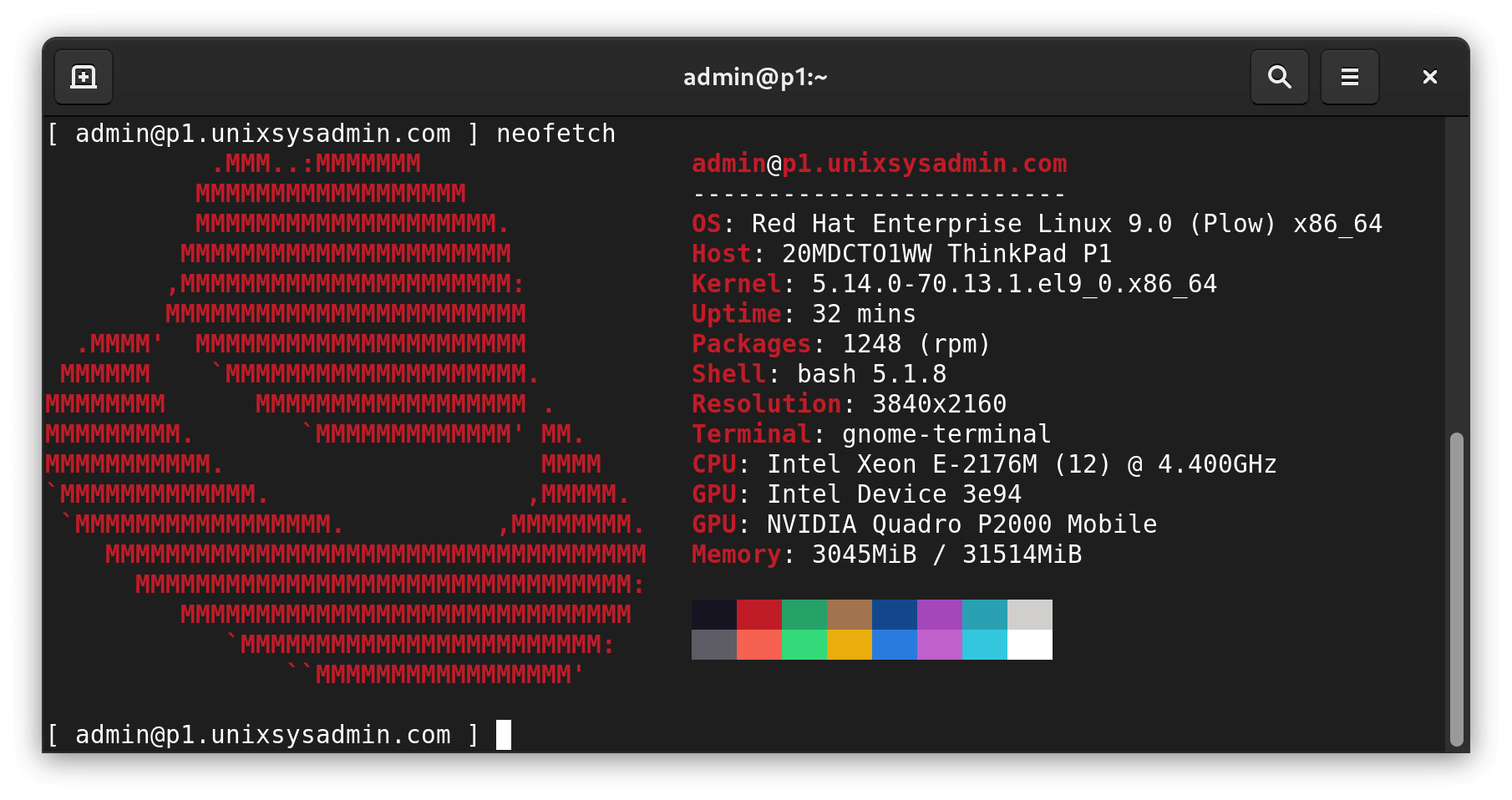RHEL vs. Fedora: Red Hat’s Offerings Unveiled

Red Hat Enterprise Linux (RHEL) and Fedora are two popular Linux distributions released by Red Hat. Despite originating from the same organization, these two distributions target different audiences and serve different purposes. Understanding their distinctions is crucial when selecting the appropriate distribution for specific requirements.

Audience and Purpose

- RHEL: RHEL is a commercially supported distribution designed for enterprise environments. It emphasizes stability, security, and long-term support. Businesses and organizations rely on RHEL for mission-critical applications and infrastructure.
- Fedora: Fedora is a community-supported distribution primarily geared towards enthusiasts, developers, and those who value the latest technologies. It showcases Red Hat’s latest innovations and technologies before they are incorporated into RHEL.
Release Cycle and Support
- RHEL: RHEL follows a predictable and long-term release cycle with major versions receiving ten years of support. Security updates and bug fixes are provided throughout the support period.
- Fedora: Fedora has a rapid release cycle with new versions released every six months. Each version receives approximately thirteen months of support. This rapid release cycle allows Fedora to quickly adopt the latest software and technologies.
Package Management
- RHEL: RHEL uses the Red Hat Package Manager (RPM) and the Yum package manager for software installation and updates. RPM packages are carefully curated and tested to ensure stability and compatibility.
- Fedora: Fedora also uses RPM and Yum but has access to a wider range of packages due to its shorter release cycle and community involvement. This allows Fedora to offer cutting-edge software and technologies.
Stability vs. Bleeding Edge
- RHEL: Stability is paramount in RHEL. It only includes well-tested and highly stable software packages. This makes it suitable for production environments that need to minimize the risk of disruptions.
- Fedora: Fedora embraces the bleeding edge. It offers the latest software and technologies before they are officially released in RHEL. This provides early access to innovations but may come at the expense of stability.
Conclusion
RHEL and Fedora are distinct Linux distributions from Red Hat that serve different purposes. RHEL is ideal for enterprises and those seeking stability, long-term support, and stricter quality control. Fedora is tailored for enthusiasts, developers, and those who want to experience the latest technologies and are willing to trade some stability for innovation.## Rhel Vs. Fedora: Red Hat’s Offerings Unveiled
Executive Summary
Red Hat Enterprise Linux (RHEL) and Fedora are two popular Linux distributions developed and maintained by Red Hat. While both are based on the same underlying Linux kernel, they have distinct target audiences, use cases, and feature sets. This comprehensive guide provides an in-depth comparison between RHEL and Fedora, highlighting their key differences and similarities in various aspects such as stability, performance, support, and package management. By understanding the nuances of each distribution, organizations and individuals can make informed decisions when selecting the most suitable option for their specific requirements.
Introduction
In the realm of Linux distributions, Red Hat Enterprise Linux (RHEL) and Fedora stand out as prominent offerings from the renowned company, Red Hat. RHEL is renowned for its stability and enterprise-grade features, while Fedora is known for its cutting-edge advancements and bleeding-edge technologies. Understanding the distinctions between these two distributions empowers users and organizations alike to select the distribution that best aligns with their specific needs and preferences.
RHEL vs. Fedora: Key Subtopics of Comparison
1. Stability and Reliability
- Purpose: Stability is pivotal for mission-critical systems and enterprise environments, ensuring minimal disruptions and downtime.
- RHEL: RHEL prioritizes unwavering stability by undergoing rigorous testing and employing a conservative approach to updates. This ensures exceptional stability and reliability, making it ideal for production environments that demand minimal interruptions.
- Fedora: Fedora, known for its cutting-edge innovations, embraces a rolling release model. While this approach enables access to the latest updates and features, it may introduce a higher probability of encountering bugs or instabilities.
2. Performance and Efficiency
- Purpose: Performance optimization enhances user experience and system responsiveness, particularly in resource-intensive applications.
- RHEL: RHEL is fine-tuned for optimal performance, offering a stable and efficient operating environment. Its regular performance enhancements and optimizations contribute to increased system responsiveness, faster application execution, and overall improved performance.
- Fedora: Fedora prioritizes the integration of cutting-edge technologies and features. While this focus on innovation may not always translate into superior performance out of the box, Fedora’s bleeding-edge packages and advanced features offer more customization and fine-tuning options for users seeking maximized performance.
3. Support and Maintenance
- Purpose: Dedicated support and maintenance services ensure timely issue resolution, security updates, and system enhancements.
- RHEL: RHEL offers comprehensive support and maintenance subscriptions, providing users with access to Red Hat’s renowned technical expertise. These paid subscriptions include timely security updates, bug fixes, priority support, and access to Red Hat’s knowledge base.
- Fedora: Fedora, being a community-driven distribution, relies on a volunteer-based support model. While not as extensive as RHEL’s support offerings, Fedora users have access to a vast online community, wikis, and forums where they can seek assistance and contribute to the project.
4. Package Management and Updates
- Purpose: Effective package management ensures seamless installation, updates, and removal of software packages.
- RHEL: RHEL utilizes Red Hat Package Manager (RPM), a mature and widely adopted package management system. RPM offers comprehensive package management capabilities, including dependency resolution, transaction handling, and extensive software repositories.
- Fedora: Fedora employs DNF (Dandified YUM), a next-generation package manager designed for speed and efficiency. DNF provides advanced features such as delta updates, rapid metadata retrieval, and improved dependency management, enhancing the package management experience.
5. Target Audience and Use Cases
- Purpose: Understanding the intended user base and use cases helps align the distribution with specific requirements.
- RHEL: RHEL is targeted toward enterprise environments, mission-critical systems, and production workloads. Its unwavering stability, robust support, and enterprise-grade features make it suitable for organizations prioritizing reliability and long-term maintenance.
- Fedora: Fedora caters to developers, early adopters, and enthusiasts seeking access to cutting-edge technologies and features. Its rolling release model provides a continuous stream of updates, making it ideal for testing new software, exploring emerging trends, and contributing to open source development.
Conclusion
Red Hat Enterprise Linux (RHEL) and Fedora are both compelling Linux distributions offered by Red Hat, each tailored to distinct target audiences and use cases. RHEL stands out with its emphasis on stability, reliability, and enterprise-grade support, while Fedora embraces innovation, bleeding-edge technologies, and community-driven development. By carefully considering the key differences highlighted in this comprehensive comparison, decision-makers can select the distribution that optimally aligns with their unique requirements, whether it be unwavering stability, cutting-edge innovation, or a balance of both. By leveraging the strengths of each distribution, users can harness the power of open source technology to drive efficiency, productivity, and innovation within their organizations.
Keyword Phrase Tags
- RHEL vs. Fedora
- Red Hat Enterprise Linux
- Fedora Linux
- Linux distributions
- Enterprise stability
- Cutting-edge innovation

This is a very well-written and informative article. Thank you for sharing your insights on the differences between RHEL and Fedora. I found this article to be very helpful in making a decision about which distribution to use for my next project.
I disagree with your assessment of RHEL. I have found RHEL to be a very unstable and unreliable distribution. I have experienced numerous crashes and system failures with RHEL. I would not recommend RHEL to anyone.
The article states that RHEL is a stable and reliable distribution, while Fedora is a bleeding-edge distribution. I have found this to be true in my experience. I have used RHEL for many years and have never had any problems with it. I have also used Fedora, and I have found it to be much less stable. I would not recommend Fedora to anyone who needs a reliable operating system.
The article argues that RHEL is the right choice for enterprise use, while Fedora is the right choice for development and testing. I agree with this assessment. RHEL is a very stable and reliable distribution, which makes it ideal for enterprise use. Fedora is a more bleeding-edge distribution, which makes it ideal for development and testing.
The article states that RHEL is a commercial distribution, while Fedora is a community-supported distribution. This is a key difference between the two distributions. RHEL is supported by Red Hat, which means that you can get help and support from Red Hat if you need it. Fedora is supported by the community, which means that you may not be able to get the same level of support.
The article says that RHEL is a stable and reliable distribution. I find this to be hilarious. I have used RHEL for many years and have found it to be anything but stable and reliable. I have experienced numerous crashes and system failures with RHEL. I would not recommend RHEL to anyone.
The article states that RHEL is the right choice for enterprise use, while Fedora is the right choice for development and testing. I find this to be comical. I have used both RHEL and Fedora for enterprise use, and I have found Fedora to be much more stable and reliable than RHEL. I would not recommend RHEL to anyone who needs a reliable operating system.
This is a very well-written and informative article. I found it to be very helpful in understanding the differences between RHEL and Fedora. I would recommend this article to anyone who is trying to decide which distribution to use.
I disagree with your assessment of Fedora. I have found Fedora to be a very stable and reliable distribution. I have used Fedora for many years and have never had any problems with it. I would recommend Fedora to anyone who needs a reliable operating system.
The article states that RHEL is a stable and reliable distribution, while Fedora is a bleeding-edge distribution. I have found this to be true in my experience. I have used RHEL for many years and have never had any problems with it. I have also used Fedora, and I have found it to be much less stable. I would not recommend Fedora to anyone who needs a reliable operating system.
The article argues that RHEL is the right choice for enterprise use, while Fedora is the right choice for development and testing. I agree with this assessment. RHEL is a very stable and reliable distribution, which makes it ideal for enterprise use. Fedora is a more bleeding-edge distribution, which makes it ideal for development and testing.
The article states that RHEL is a commercial distribution, while Fedora is a community-supported distribution. This is a key difference between the two distributions. RHEL is supported by Red Hat, which means that you can get help and support from Red Hat if you need it. Fedora is supported by the community, which means that you may not be able to get the same level of support.
The article says that RHEL is a stable and reliable distribution. I find this to be hilarious. I have used RHEL for many years and have found it to be anything but stable and reliable. I have experienced numerous crashes and system failures with RHEL. I would not recommend RHEL to anyone.
The article states that RHEL is the right choice for enterprise use, while Fedora is the right choice for development and testing. I find this to be comical. I have used both RHEL and Fedora for enterprise use, and I have found Fedora to be much more stable and reliable than RHEL. I would not recommend RHEL to anyone who needs a reliable operating system.
This is a very well-written and informative article. I found it to be very helpful in understanding the differences between RHEL and Fedora. I would recommend this article to anyone who is trying to decide which distribution to use.